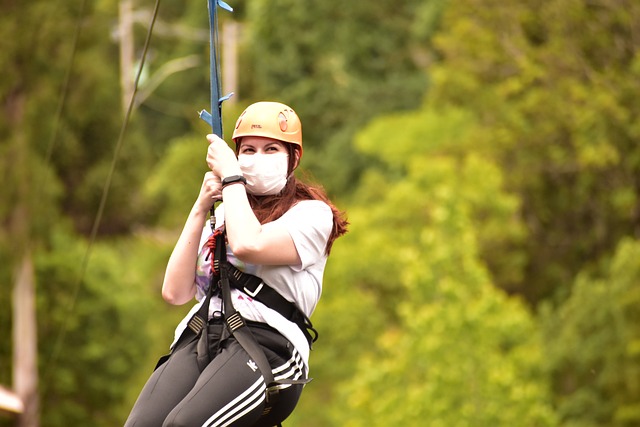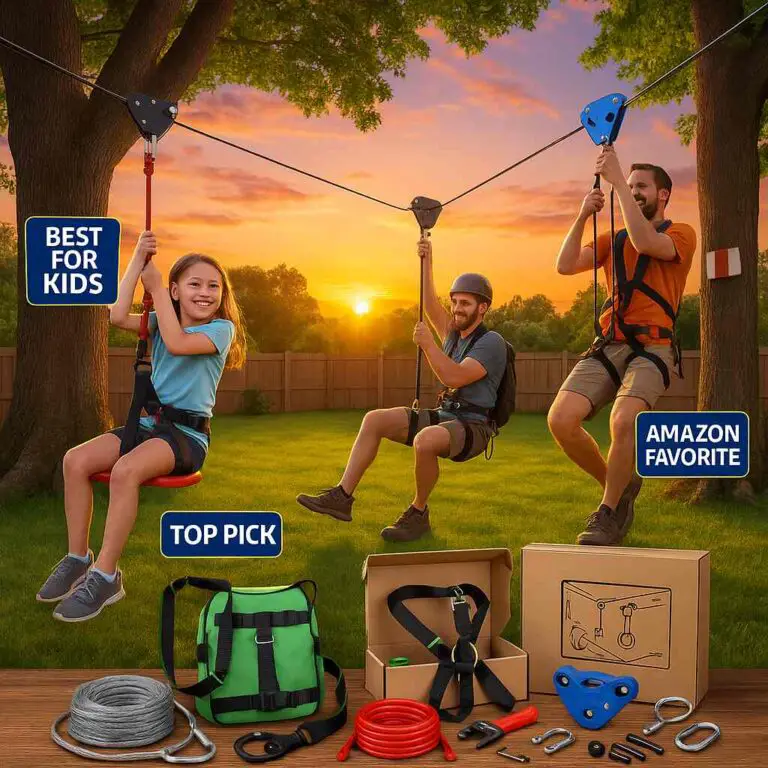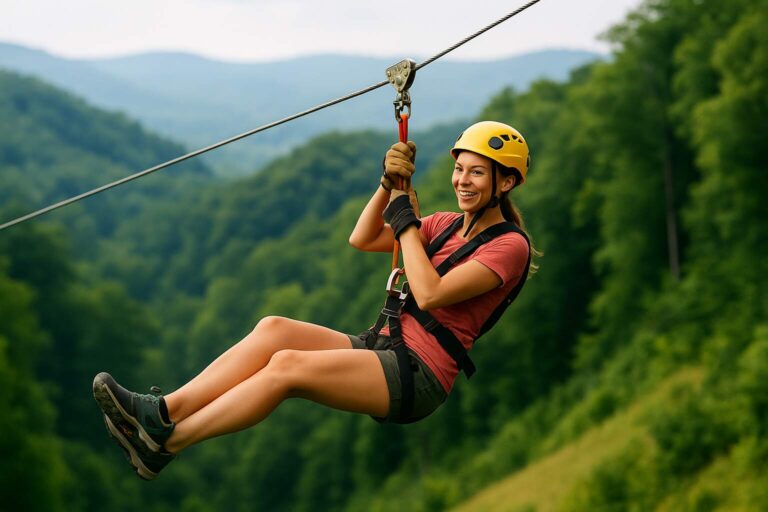A backyard zipline can be a great way to bring some excitement to your backyard. But before you install one, it’s important to understand the different factors that go into determining how high your zipline should be. This includes safety considerations, the type of zipline you’re using, and the amount of space you have available for installation. With this information in hand, you’ll be able to make an informed decision about how high your backyard zipline should be.
A good high for a backyard Zipline should be a 3 percent slope for moderate speed and a maximum slope guideline of 6 percent. I advise a maximum 6-foot drop for every 100 feet of zip line cable, to simplify.
The first consideration when thinking about the height of a backyard zipline is safety. The most important thing is to make sure that your zipline doesn’t interfere with any nearby power lines, electrical wires, or other structures. But even if you’re confident that your zipline won’t interfere with these things, it’s still important to keep an eye on them periodically. For example, if you live in a part of the country where there are lots of storms and trees are susceptible to falling because of high winds, it might be worth considering installing some sort of guard around your zipline to protect it from damage.
What is the Ideal Height for a Backyard Zipline?
Ziplining is a thrilling and fun activity for all ages, but it is important to make sure that you are following the proper safety guidelines. Backyard zip lines can be a great addition to your home, but it is important to know what the ideal height for a backyard zipline should be. The length of a backyard zipline should be no longer than 12 feet.
Ziplines that are shorter than 12 feet can still be fun, but they are not safe. When selecting the length of your backyard zipline, keep in mind that it is important to keep kids within arm’s reach when they are using it. If the line is too long, kids will have to jump off quickly and may miss a handhold on their way down which could lead to injury. On an extension cord length of 100 feet, you want your line to be around 10 feet long to prevent kids from jumping off prematurely.
When deciding on the height of your zipline, there are several factors to consider. First, you need to decide how tall the tower should be. This will depend on the length of the zipline and how high you want it to go. Additionally, safety is a major concern when it comes to ziplining. You must make sure that you have taken all necessary safety precautions before setting up your zipline, such as making sure that the tower is stable and secure, and that you are using proper safety equipment. Lastly, familiarizing yourself with some important ziplining safety tips can help ensure a safe and enjoyable experience for everyone involved in your zip line adventure.
I wrote a complete article on how long should a Zipline be, read it here.
What is the Maximum and Minimum Height Recommendation for Home Zip Lines?
Zip lines are a fun and exciting way to get around the house, but it’s important to understand the recommended maximum and minimum height requirements for safe installation. This is especially true when it comes to home zip lines, as they can be used by children or adults of all ages.
The American Society for Testing and Materials (ASTM) D-4007 recommends a maximum height of 12 meters, or 39 feet, from the ground to the starting point of your zipline. It is also recommended that you have a minimum distance from any object of 12 meters or approximately 39 feet. When considering these recommendations, consider that a standard basketball court measures only 648 square feet and an average person is about 2.4 meters tall. So it would be best to use this as an average when setting up your own home zip line.
Explore the age limits for Ziplining here.
How to Secure the Zip Line and What Safety Equipment is Necessary?
What does it mean to secure a zip line? To secure a zip line, the rider needs to make sure that the launch and landing areas are marked with a warning sign. Ride operators must also inform their guests about where lines will cross, including whether those lines are electrified. Lastly, riders should follow all instructions given by the operator before commencing any ride on the zip line system.
The following guidelines can help you ensure that your next river or mountain getaway is safe and accessible: The rider should make sure that there is sufficient space for every person on their trip over and around the zip line. They should also ensure that the equipment is secured and that they are given proper instructions before they head out on their adventure. If the launch area or landing area is too small, people cannot get around the zip line safely. If there are stretches of bare metal on a metal cable, riders should not proceed until it has been properly insulated to prevent electrical shock.
The rider should also be aware of any barriers that may impede their progress over and around the zip line; for example, trees or rocks. The operator must take every precaution when using electricity in order to ensure safety for both themselves and their guests.
Steps to Take to Secure a Zip Line
- 1. Use electricity only for the purposes of operating the equipment safely and efficiently.
- 2. Ensure that there are no exposed wires or cords of any kind in use and operational areas; this includes insulation, conduit, and conductors.
- 3. Make sure that their guests are properly trained in how to use the equipment before they head out on their adventure, as well as know how to reduce hazards by staying clear of live cables and area access points until an operator has made contact with them by radio or cell phone; this includes insulating all exposed metal surfaces, such as cable spools, pulleys, and running chains to prevent electrocution.
- 4. Test their equipment before every use, and make sure that the power source is switched off before guests start using it.
- 5. Instruct their guests to only operate the equipment by pushing/pulling on it and never by jumping from one part of it to another, as well as stay away from exposed wires or cords when operating the equipment.
- 6. Keep all safety gear on hand for their guests at all times; this includes tethered jump ropes, helmets, gloves, and boots for them in case they need a quick replacement during operation or an emergency situation arises while they are riding the equipment.
- 7. Instruct their guests to never stand directly on the handles of the equipment, especially when they are learning to ride it, as this could cause injury or break the equipment apart.
- 8. If there is any concern that their guests might need help while riding the equipment, have them put on a helmet and call for assistance from an adult who will give them a hand until they can ride independently.
Conclusion
Backyard ziplines can be a fun and exciting addition to any home. However, it is important to take the necessary safety precautions when constructing and using a backyard zipline. The height of the zipline should be determined by the user’s skill level and experience, as well as the size of the area available for use. It is best to consult with an expert before constructing a backyard zipline in order to ensure that it is safe for use. With proper planning and safety measures in place, backyard ziplines can provide hours of entertainment for all ages.








